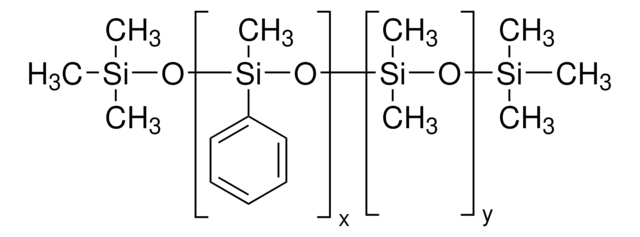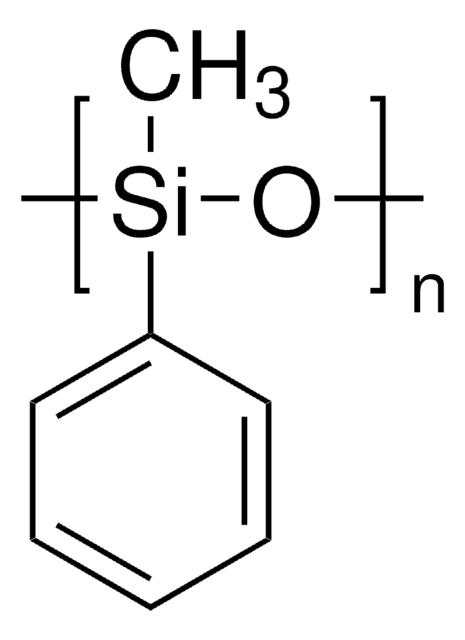10836
Silicone oil AR 20
viscosity ~20 mPa.s, neat(25 °C)
Synonym(s):
Polyphenyl-methylsiloxane
Sign Into View Organizational & Contract Pricing
All Photos(2)
About This Item
Recommended Products
refractive index
n20/D 1.441-1.445
Quality Level
viscosity
~20 mPa.s, neat(25 °C)
density
1.000-1.020 g/mL at 20 °C
General description
Silicone oil AR 20 is a polydimethylsiloxane with phenyl groups that is commonly used as a heat transfer or pressure transfer fluid.
Application
Silicone oil AR 20 has been used:
- As a Segmenting fluid in polymerase chain reaction (PCR).
- In hollow fiber liquid-phase microextraction (LPME) procedure for extraction of hydrophobic drugs from human breast milk.
- As a fluid to demonstrate pores in droplet interface bilayers (DIBs).
Features and Benefits
Especially good thermostability (-50°C to +230°C)
Storage Class Code
10 - Combustible liquids
WGK
WGK 3
Flash Point(F)
338.0 °F - Not applicable
Flash Point(C)
170 °C - Not applicable
Personal Protective Equipment
dust mask type N95 (US), Eyeshields, Gloves
Choose from one of the most recent versions:
Already Own This Product?
Find documentation for the products that you have recently purchased in the Document Library.
Customers Also Viewed
Liquid-phase microextraction of drugs from human breast milk
Bj?rhovde, A, et al.
Analytica Chimica Acta, 491(2), 155-161 (2003)
Formation of droplet interface bilayers in a Teflon tube
Walsh E, et al.
Scientific reports, 6(2), 34355-34355 (2016)
E J Walsh et al.
Biomedical microdevices, 7(4), 269-272 (2006-01-13)
This paper evaluates the compatibility of segmenting fluids for two phase flow applications in biomedical microdevices. The evaluated fluids are chosen due to the variations in fluid properties and cost, while also reflecting their use in the recent literature. These
Helena L E Coker et al.
Biophysical journal, 116(6), 1085-1094 (2019-03-09)
Diffusion in cell membranes is not just simple two-dimensional Brownian motion but typically depends on the timescale of the observation. The physical origins of this anomalous subdiffusion are unresolved, and model systems capable of quantitative and reproducible control of membrane
Gema Flores et al.
Journal of chromatography. A, 1153(1-2), 29-35 (2007-02-20)
A method based on the use of absorbents as packing materials in the interface of the direct coupling between reversed phase liquid chromatography and gas chromatography (RPLC-GC) is proposed. To that end, a comparative study on different adsorbents and absorbents
Our team of scientists has experience in all areas of research including Life Science, Material Science, Chemical Synthesis, Chromatography, Analytical and many others.
Contact Technical Service




